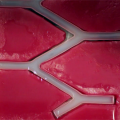 In my previous article here at Darwinian-Medicine.com I took a critical look at Mark Zuckerberg’s plan to cure all diseases. I made the case that pumping billions of dollars into the development of new drugs and advanced medical technology is not the way to combat the chronic diseases of civilization. Health disorders such as obesity, colon cancer, heart disease, autism, and diabetes develop as a result of complex genome-environment interactions and can’t be eradicated with pharmaceutical drugs, surgeries, or similar conventional medical therapies (at least not without meddling with things we probably shouldn’t be meddling with).
In my previous article here at Darwinian-Medicine.com I took a critical look at Mark Zuckerberg’s plan to cure all diseases. I made the case that pumping billions of dollars into the development of new drugs and advanced medical technology is not the way to combat the chronic diseases of civilization. Health disorders such as obesity, colon cancer, heart disease, autism, and diabetes develop as a result of complex genome-environment interactions and can’t be eradicated with pharmaceutical drugs, surgeries, or similar conventional medical therapies (at least not without meddling with things we probably shouldn’t be meddling with).
In the context of acute, infectious illness, vaccines and pharmaceutical drugs have proven much more effective. That said, we should be cautious not to think that producing new medicines is the key to protecting ourselves from all pathogenic microorganisms that cause us harm. Antibiotics and other similar drugs have helped us combat many infectious illnesses, but in the process they have made our bodies weaker and more fragile and paved the way for inflammation-related diseases to develop.
Moreover, widespread use of antimicrobial drugs has triggered the evolution and spread of antibiotic-resistant superbugs, a problem that is today considered a major public health crisis. A lot of money and resources have been put into the development of new antimicrobial drugs that kill these rapidly evolving superbugs. Unfortunately, this strategy hasn’t proven very effective. The bacteria are outrunning us. They are changing and adapting at a rapid pace, and we’re having a lot of trouble keeping up.
I’d argue that we should divert some of our attention away from combatting bad bugs and instead focus more on nurturing good ones, a strategical change that should improve our chances of combatting both acute and chronic disease.
This leads us over to the topic of today’s article…
A mass extinction
It’s well known that human activities have caused a drop in the biodiversity of the global ecosystem. Many plant and animal species have gone extinct because we humans have been meddling with nature. We’ve burned down forests, built huge cities, planted monocultures, sprayed our crops with pesticides, and polluted the air and water, thereby harming the health of our planet.
Over the past couple of decades it has become clear that it’s not just the part of the world we can see with our naked eyes that has been damaged by these activities, but also the invisible, microbial world in which we find ourselves. The microbial ecosystems associated with the air we breathe, food we eat, and soil we use to grow our food have changed. Moreover, microbes have been disappearing from the microbial communities that we hold most dear: the ones that colonize our own bodies.
The consequences of this mass extinction are profound.
What happens when we change the microbial world around us?
The way of life of the modern man is very different from that of ancient humans. Our primal forebears didn’t spend their days sitting in front of a computer; they didn’t use antibiotics, eat highly processed food, or drink chlorinated water; and they didn’t wash their bodies every morning with soap or cover their skin with moisturizers and lotions of various kinds.
Moreover, they stayed within the ecological niche that evolution had carved out for them; they didn’t overstep their bounds or try to take control of nature and the planet. Not because they made a conscious choice not to, but because they didn’t have the technology or knowledge to do so.
Today, it seems like we humans have forgotten that we are a part of nature, not separated from it. We seem to think that we are able to control what happens in the ecosystems around us – that it’s better to leave us in charge than the systems that have been put in place by nature. History has shown us that this is not the case. When we humans are put in charge, bad things usually happen.
One of the things that has become abundantly clear is that we are unable to predict the consequences of all of our actions. Nature is so vast and complex that it’s virtually impossible for the human mind to comprehend how the activities of our species affect the world over the long-term.
There is so much we don’t know about our planet, and hence, we don’t always have all of the information we need to make the best choices. This has been clearly shown throughout human history.
It’s not so long ago that we humans were unaware of the fact that there are invisible life forms present here on the planet. Hence, we had no way of knowing that the microbial systems present in our milieu are affected when we use our knowledge and technology to change the world around us.
Now we know. It’s becoming increasingly recognized that the recent changes that have occurred to the part of the environment we can see with our naked eyes have been accompanied by changes within the invisible world around us. Perhaps most disturbingly, we’ve changed the microbial ecosystems that are associated with the human body and lost organisms that co-evolved with our ancestors for millions of years.
Biome depletion
Here on the website I’ve talked a lot about the human microbiome, and I’ve repeatedly made the case that dysbiosis and loss of microbiota diversity are at the root of many diseases, both chronic and acute. What is important to note, though, is that it’s not just microbes we’ve lost. We’ve also lost some critters that are not technically classified as microorganisms, but rather as eukaryotes (e.g., helminths).
In many parts of the developing world, it’s common to harbor worms in the gut. In the industrialized world, however, worms have largely been eliminated from humans’ environment, and most people look at worms as foreign and gross – not something they want in their intestine. It’s true that we should keep most worms far away from our body; however, some may actually do us a lot of good.
Ancient humans ate a very different diet than modern people, adhered to a different lifestyle, and lived in a different miliu. Hence, they were exposed to a different mix of bacteria, fungi, viruses, and other critters. Dr. Graham Rook, a man who has written dozens of scientific papers on topics related to the biome depletion concept, makes the case in his papers that some of the critters that have disappeared from the human biome were lost as far back as 10.000+ years ago, whereas others were lost more recently.
As you can see from the figure below (which I took the liberty of borrowing from one of Dr. Rook’s papers), humans’ microbial environment has changed a lot recently.

Figure by Dr. Graham Rook. Source.
The idea that the biome of the modern man is disturbed and low in biodiversity is supported by a strong body of evidence (1, 2, 3, 4, 5). Some of this evidence is derived from studies that have compared the microbiota composition of modern people with that of ancient humans, modern-day hunter-gatherers, and traditional people. These studies have found that that westerners house fewer microbial species in their gut than people who live in an environment that is more similar to the ancestral milieu in which our preagricultural ancestors lived (4, 5).
We’ve lost a part of ourselves
The fact that some of the tiny organisms that were a part of the Paleolithic environments in which Homo habilis, Homo erectus, and all of the other hominin species evolved are largely absent from modern environments is concerning for a number of reasons.
It’s not just the visible part of the ancestral, natural milieu that conditioned the human genome, but also the invisible, microbial part. Microbes are integrated into our biology. They’ve kept us company on our evolutionary journey and contributed to shaping our bodies and immune systems.
When we lose an organism that has been an integral part of the human superorganism for millions of years, we basically lose a part of ourselves. A section of the superorganism’s genetic make-up disappears, something that has obvious implications for the homeostasis of the system.
Both the human host and the microbiota become destabilized. The microbiota loses some of its stability and resilience and may be opened up to invasion by pathogens, and the human host no longer receives all of the microbial inputs it needs to maintain a well-functioning, powerful immune system and operate the way it was evolutionarily designed to operate.
Many scientists now recognize that a loss of biodiversity from the human superorganism may be at the root of a long range of diseases and health problems, including chronic depression, autism, Alzheimer’s disease, and autoimmune conditions such as type 1 diabetes and celiac disease (1, 2, 3, 6, 7, 8, 9).
Seeding our gardens
We’re now aware of the fact that we’ve damaged the global ecosystem, including the living communities that colonize the human body. We need to rectify this damage, or else we will never be able to heal our planet or our bodies.
Microbes evolve at a rapid pace and are able to swap genetic material between each other. Hence, one bug may be able to evolve an ability to carry out many of the same functions and metabolic processes as another microorganism. This is one of the reasons why humans and other animals don’t depend on a specific set of microbes to be able to function correctly. That said, there are some critters that may not be that easily “replaced”, such as certain types of helminths.
The challenge moving forward will be to find safe and effective ways to repopulate the human superorganism. We already have some tools available to us, such as fermented vegetables, FMTs, raw plants, and probiotics, but we don’t have all the tools we need to do the job in a satisfactory way. Our tool kit is incomplete. This is particularly true when it comes to the section of the kit devoted to tools that are used to populate the human biome with organisms that are not a part of the bacterial kingdom (e.g., worms).
The 3 billions dollars Mark Zuckerberg has allocated to his mission of curing all diseases could dramatically improve our current health-care system, but only if they are used on the right things. I’d argue that biome reconstitution is one such thing. A massive effort to reconstitute the depleted human biome would improve public health and decrease the prevalence of a long list of diseases, particularly if it’s combined with interventions aimed at improving people’s diet.
Here’s what Dr. William Walker, an Associate Professor at Duke University, had to say about the importance of restoring the human biome:
A synthesis of evolutionary biology, epidemiology, modern medicine, and immunology strongly suggests that biome reconstitution and maintenance should be a major thrust of the medicine of the future. Old paradigms of pharmaceuticals as a cure for immune-associated disorders are potentially as inferior to biome reconstitution as anti-cholesterol drugs are inferior to a healthy diet and adequate exercise. We cannot escape the biology imposed by our evolution, and the medical science of the future will take that fact fully into account. (7)



